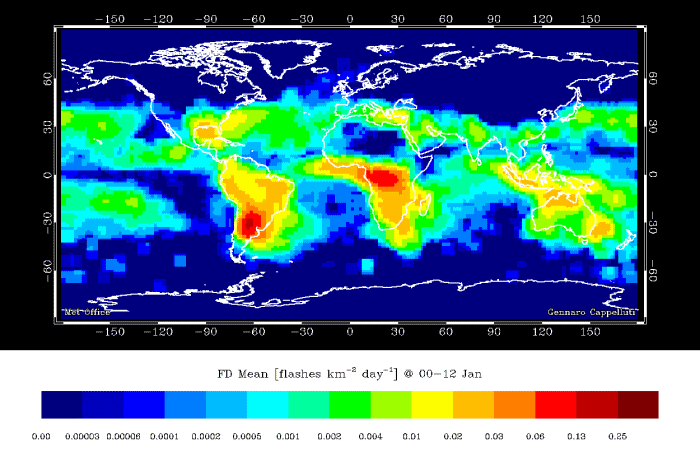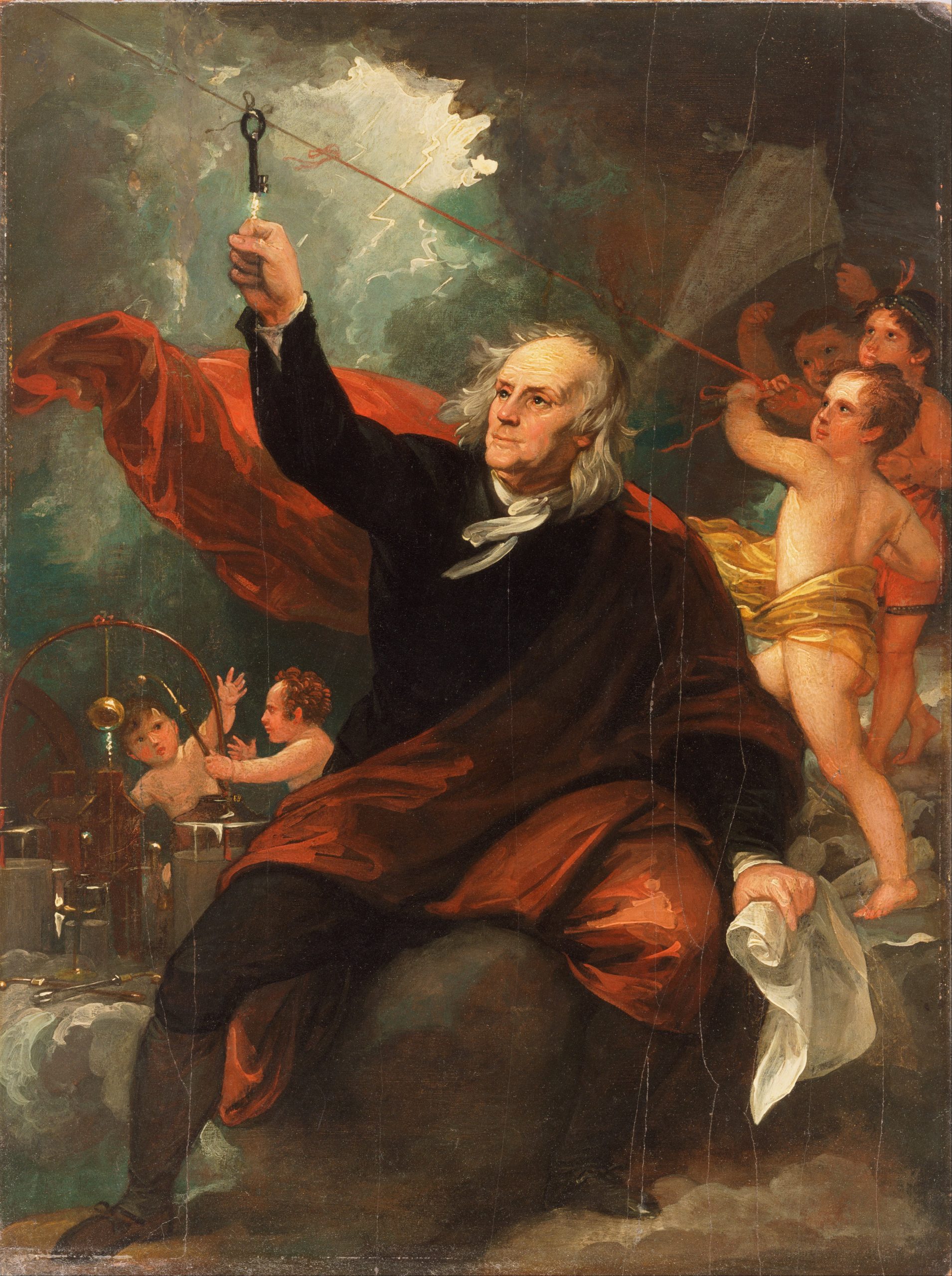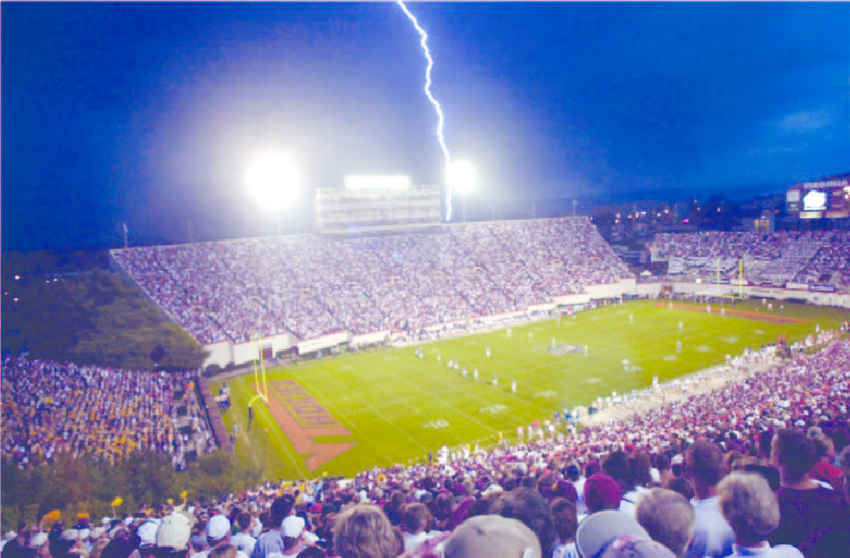2026 Public Input Report | 2026 Public Comment Report
FEMA National Risk Index: Lightning
Benjamin Franklin conducted his famous experiment with lightning on June 10, 1752.
He used a kite and a key to demonstrate that lightning was a form of electricity.
This experiment marked an important milestone in understanding the nature of electricity
and laid the foundation for the development of lightning rods and other lightning protection systems.
Seasonal extreme weather patterns in the United States, resulting in damages to education facilities and delays in outdoor athletic events — track meets; lacrosse games, swimming pool closures and the like — inspire a revisit of the relevant standards for the systems that contribute to safety from injury and physical damage to buildings: NFPA 780 Standard for the Installation of Lightning Protection Systems
To paraphrase the NFPA 780 prospectus:
- This document shall cover traditional lightning protection system installation requirements for the following:
(1) Ordinary structures
(2) Miscellaneous structures and special occupancies
(3) Heavy-duty stacks
(4) Structures containing flammable vapors, flammable gases, or liquids with flammable vapors
(5) Structures housing explosive materials
(6) Wind turbines
(7) Watercraft
(8) Airfield lighting circuits
(9) Solar arrays - This document shall address lightning protection of the structure but not the equipment or installation requirements for electric generating, transmission, and distribution systems except as given in Chapter 9 and Chapter 12.
(Electric generating facilities whose primary purpose is to generate electric power are excluded from this standard with regard to generation, transmission, and distribution of power. Most electrical utilities have standards covering the protection of their facilities and equipment. Installations not directly related to those areas and structures housing such installations can be protected against lightning by the provisions of this standard.)
- This document shall not cover lightning protection system installation requirements for early streamer emission systems or charge dissipation systems.
“Down conductors” must be at least #2 AWG copper (0 AWG aluminum) for Class I materials in structures less than 75-ft in height
“Down conductors: must be at least 00 AWG copper (0000 AWG aluminum) for Class II Materials in structures greater than 75-ft in height.
Related grounding and bonding requirements appears in Chapters 2 and Chapter 3 of NFPA 70 National Electrical Code. This standard does not establish evacuation criteria.
The current edition is dated 2023 and, from the transcripts, you can observe concern about solar power and early emission streamer technologies tracking through the committee decision making. Education communities have significant activity in wide-open spaces; hence our attention to technical specifics.
Public input on the 2026 revision is receivable until 1 June 2023.
We always encourage our colleagues to key in their own ideas into the NFPA public input facility (CLICK HERE). We maintain NFPA 780 on our Power colloquia which collaborates with IEEE four times monthly in European and American time zones. See our CALENDAR for the next online meeting; open to everyone.

Lightning flash density – 12 hourly averages over the year (NASA OTD/LIS) This shows that lightning is much more frequent in summer than in winter, and from noon to midnight compared to midnight to noon.
Issue: [14-105]
Category: Electrical, Telecommunication, Public Safety, Risk Management
Colleagues: Mike Anthony, Jim Harvey, Kane Howard
Didn't really plan for all possibilities, did they. 🤓
NC State's brand-new scoreboard shorts out due to lightning storms https://t.co/KWm78nrRau
— DJ (@DJ87112331) September 10, 2023
The "Top engineering school in the state" just built a $15 million scoreboard without a lightning rod.
Wasn't it just last year that their game got delayed because they couldn't turn the lights on? https://t.co/wWt9gSMYIv
— Steele (@0Gstank) September 9, 2023
More
Installing lightning protection system for your facility in 3 Steps (Surge Protection)
IEEE Education & Healthcare Facility Electrotechnology
Readings: The “30-30” Rule for Outdoor Athletic Events Lightning Hazard
Churches and chapels are more susceptible to lightning damage due to their height and design. Consider:
Height: Taller structures are more likely to be struck by lightning because they are closer to the cloud base where lightning originates.
Location: If a church or chapel is situated in an area with frequent thunderstorms, it will have a higher likelihood of being struck by lightning.
Construction Materials: The materials used in the construction of the building can affect its vulnerability. Metal structures, for instance, can conduct lightning strikes more readily than non-metallic materials.
Proximity to Other Structures: If the church or chapel is located near other taller structures like trees, utility poles, or buildings, it could increase the chances of lightning seeking a path through these objects before reaching the building.
Lightning Protection Systems: Installing lightning rods and other lightning protection systems can help to divert lightning strikes away from the structure, reducing the risk of damage.
Maintenance: Regular maintenance of lightning protection systems is essential to ensure their effectiveness. Neglecting maintenance could result in increased susceptibility to lightning damage.
Historical Significance: Older buildings might lack modern lightning protection systems, making them more vulnerable to lightning strikes.
The risk can be mitigated by proper design, installation of lightning protection systems, and regular maintenance.











